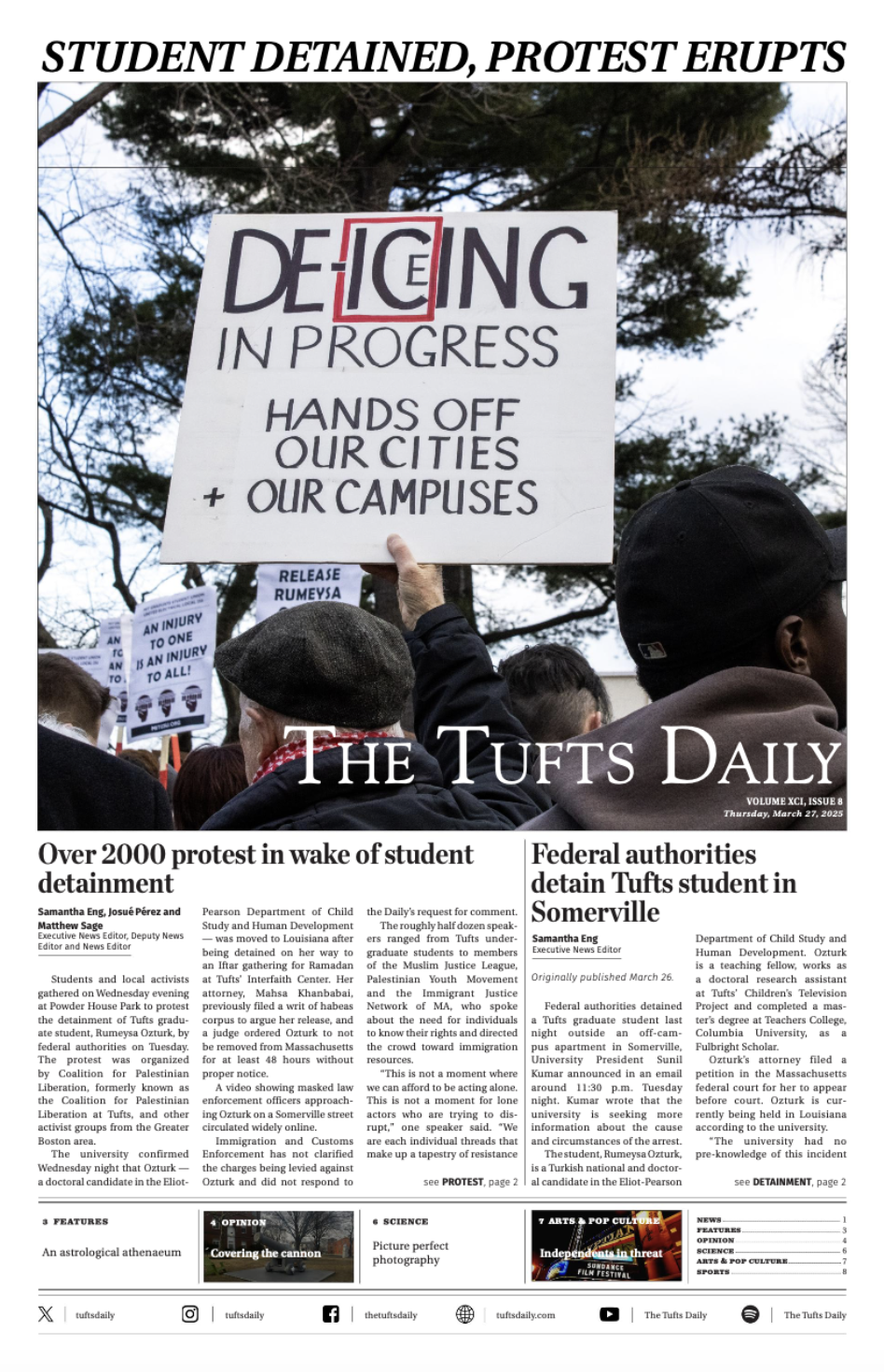Kenneth Tam’s “Standing in Soft Formation” recently ended its three-month tenure at Tufts University Art Galleries’ exhibition space in the Aidekman Arts Center.
Tam, an artist based in Houston, Texas and Queens, N.Y., is currently an assistant professor at Rice University and a member of the faculty at the Milton Avery Graduate School of the Arts at Bard College. He has previously served as a lecturer at Princeton University, Sarah Lawrence College and Harvard University. Known for his experience across a variety of artistic mediums, Tam practices in video, sculpture, performance, movement, installation and photography. His work often explores the complex interactions between gender, intimacy and public performance. Such investigation can be found once again in his contemplative exhibition “Standing in Soft Formation,” which was housed at Aidekman Arts Center on the Medford/Somerville campus from Jan. 24 to April 21.
In “Standing in Soft Formation,” Tam explores the myths and performative culture that forms the foundation of American ideas regarding masculine identity, particularly its influence on the formation of Asian American identity. The exhibition demonstrates Tam’s fluency in multimedia work and includes choreographed video, photography and sculpture, and puts into conversation his two most recent projects: “Silent Spikes” (2021) and “The Founding of the World” (2023).
“Silent Spikes,” which makes up the first section of the gallery, is a meditation on intimacy, social customs and masculinity explored through sculpture, photography and a two-channel video. The video explores the aforementioned topics through the vernacular of mythologized American archetypes, such as the archetype of the cowboy. In conjunction with images associated with the all-American West are videos and sculptures that include references to the lives of the Chinese railroad workers who endured withering physical conditions, low wages and social isolation while they completed the construction of the transcontinental railroad. Considered one of the greatest engineering feats in American history, the construction of the railroad connected the eastern American states to the West, laying the foundation of America's unprecedented prosperity.
The two-channel video, “Silent Spikes,” was originally commissioned by the Queens Museum with support from the Asian Art Circle of the Guggenheim Museum. The video includes images and archival footage of cowboys, as well as visual and narrative references to the labor strike organized by the Chinese laborers in 1867. Interspersed throughout the video is contemporary footage of the choreographed, as well as free, movements of Tam’s performers. By putting into conversation footage of cowboys, 19th century Chinese laborers and contemporary dance, the film demands attention to be paid to the moral complexities of American history, while also serving as a meditation on identity and media.
In addition to the two-channel video are sculptures that invoke the struggle and perseverance of 19th century Chinese laborers in the U.S., most notably Tam’s sculptures of enlarged Imperial Chinese coins. Laborers often carried such coins in their pockets for fortune. Embedded into the material of the sculptures are perishable foodstuffs and portions of refuse, earthenware and jewelry. Several pieces of the embedded material were collected from the actual sites of the migrant worker camps, invoking the identity and lives of these nameless workers through the items and pieces that they left behind.
The exhibition’s second installation, “The Founding of the World,” made its museum debut at the Berkeley Art Museum and Pacific Film Archive in 2023. The installation incorporates Tam’s research into the history of fraternities and Greek culture, particularly the practice of the probate: an induction ritual in certain Asian American college fraternities. Consisting of video and sculpture, the installation explores the role of ritual, excess and masculine identity. Of interest to Tam is how the coercive ritual of the probate attempts to facilitate group cohesion, yet ironically undermines these group bonds. In the end, such contradictions and rituals ultimately damage the relationships that many young Asian American men have with their own identities.
The video features a group of young Asian men performing a series of ritualized gestures meant to evoke those actually practiced by fraternities. A recording of a composition by vocalist yuniya edi kwon plays in the background, and the physical space of the gallery itself is ornamented with empty bottles of alcohol and cologne suspended from the ceiling. In addition to these suspended objects are wall structures, piles of hoodies and varsity jackets cast in sculpting resin, vaguely resembling the physical shape of a coat of arms, ritual tablets and other heraldic symbols. Simultaneously, they appear clumsy, as though haphazardly tossed onto the floor in a pile. While there is an air of tongue-in-cheek humor to this installation, the cologne, liquor bottles and red attire engage the vernacular of a derivative and violent male identity.
Kenneth Tam’s “Standing in Soft Formation” is a meditation on intimacy and masculinity; privacy and performance; a pulling together of disparate images and ideas across media to say something more about what it means to be human today.

Kenneth Tam speaks at the exhibit’s opening exhibition on Jan. 24.

Two-channel video from “Standing in Soft Formation” is pictured.






